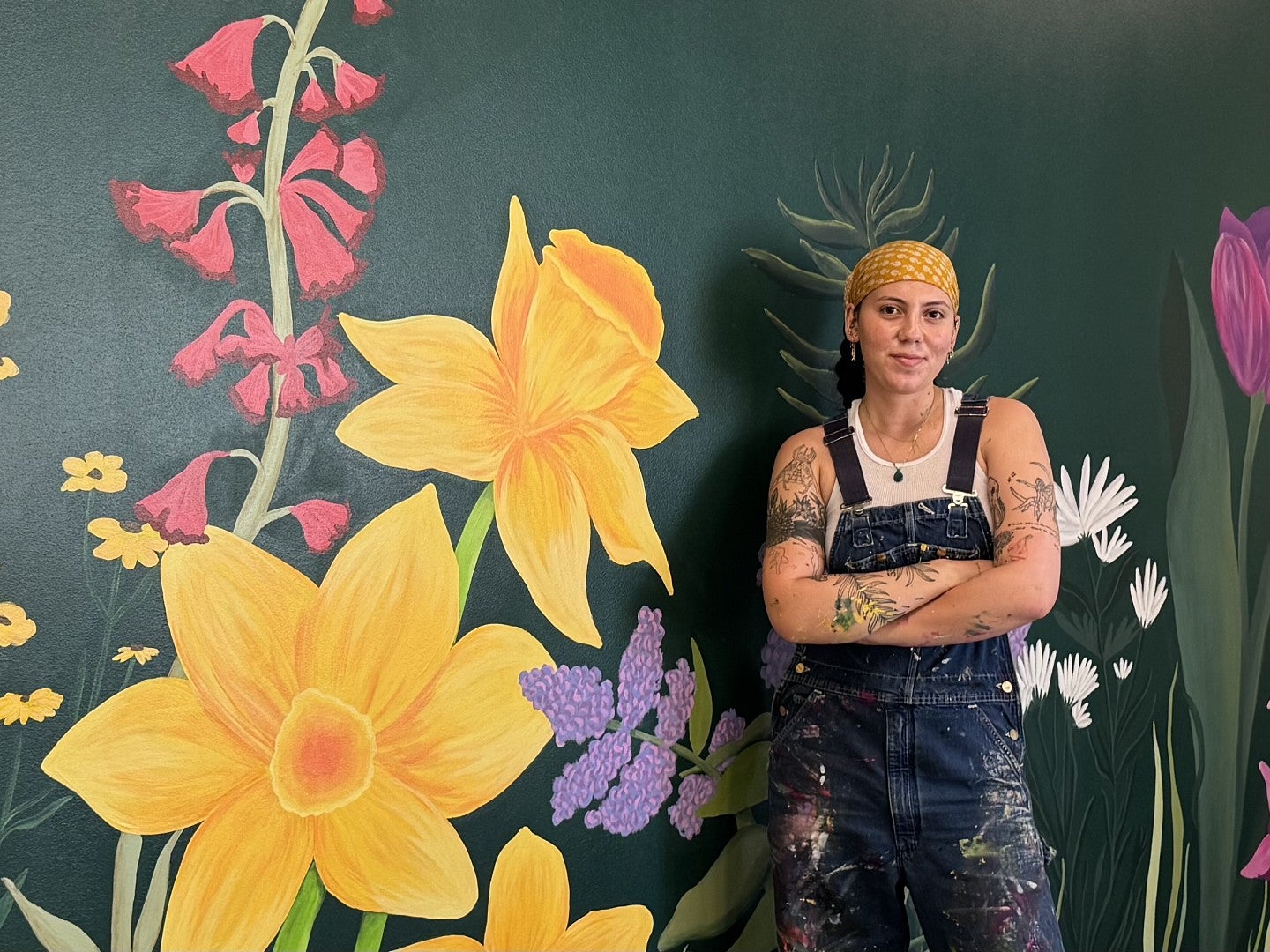
New mural is latest step for emerging student artist
In her studies, Stella Prichard explored the tension between making art for others, and for oneself
It was Friday evening, April 25, and Stella Prichard was reviewing the pieces she had made for the senior thesis exhibition in the College of Design School of Art + Design. The event is the capstone for students in the bachelor of fine arts program and a showcase for these emerging artists.
As Prichard studied her entries — 10 canvas and acrylic paintings — fear suddenly washed over her as a grim realization set in: she didn’t like most of them.
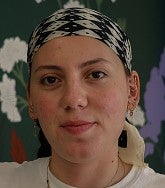
“Once again,” she thought to herself wryly, “I’m not doing what I want to do.” Somehow, she had yet again spent weeks making art for someone or something other than herself — a professor she thought she needed to impress, perhaps, or an idea that had been the focus of some class she needed to pass.
She was heartbroken. But what could she do? The show would open in two days.
Prichard, who graduated in June, is one of five student artists in Flourishing by Art, a new art initiative that supports the university’s strategic goal of helping everyone at the UO to flourish. Under the joint project of Housing Capital Construction and the Associated Students of the University of Oregon, Prichard and the other artists recently completed murals and a sculpture for three residence halls.
Key to the university’s flourishing goal is creating the conditions for personal growth; that includes programs that challenge students, staff and faculty and provide opportunities to learn, strive and thrive. The art initiative supported that goal by giving student artists venues to practice their craft and exhibit their work.
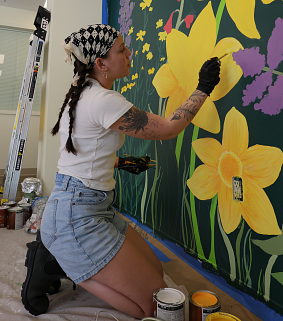
Prichard’s mural for Global Scholars Hall, “Flora and Fauna,” is a flowery tribute to biodiversity: tulips and lupine, yarrow and rosemary, all rendered in bright yellows, purples, greens and reds with latex paint.
“We share space,” Prichard said. “We need each other to function, we need nature to function and we need diversity in plants and people and animals, everything. It’s all about growing together and finding support where you need it.”
Prichard found the support she needed in the art and design school. Faculty helped her come to terms with an age-old dilemma that defines her growth as an artist: whether to make art for others, or for oneself.
For much of history, artists created only for their audience, because all art was commissioned. That model continues today in client-driven art, and Prichard has benefited from it: she has worked with prominent decorative artist Caroline Lizarraga of San Francisco, applying her painting skills for lucrative interior design projects.
But Prichard has also been obliged to make art for audiences in the Department of Art — namely, faculty in the bachelor of fine arts program. Those educators must ensure that students are proficient in all aspects of fine art necessary to earn the degree; Prichard struggled to find the balance between making the kind of art that pleased her and making the kind necessary for a good grade.
Michael Rey, a visiting assistant professor, was an exception: Rey had latitude to let students explore the art that inspired them.
“He was so positive, he would say, ‘You should just be making art, it doesn’t always have to have this intense meaning and be analyzed in such an intense way,’” Prichard said. “He really provided this experience that didn’t limit me. It piqued my interest in art.”
In her worst moments, Prichard considered leaving the program. But conversations with Assistant Professor Ellen Lesperance convinced her to continue — and to put faith in her own decisions as an artist.
“She reassured me, ‘You’re not supposed to feel like you’re being beaten down — the program is meant to teach you how to thrive as an independent artist,’” Prichard said. “She could see what I was passionate about. She reminded me that this was about making art and not about getting a grade.”
Prichard had Lesperance’s voice in her head on that bleak Friday evening in April, the weekend before the senior exhibition.
She was frustrated with her art and terribly sick, to boot. But she had two days.
“Something happened, and I just tore up all my canvases except for two,” Prichard said. “I went to the art store and got all new materials. I spent two whole days in my apartment and literally just worked. [The faculty] were all concerned when they walked into the exhibition Monday and all my work was different, but it was funny. They could all tell it was the most ‘me’ painting that I had done all term. My work finally felt like it was me.”
The revised paintings combined methods Prichard had studied — weaving and staining canvas strips — with personal flourishes that captured her love of nature: frogs, butterflies, hummingbirds.
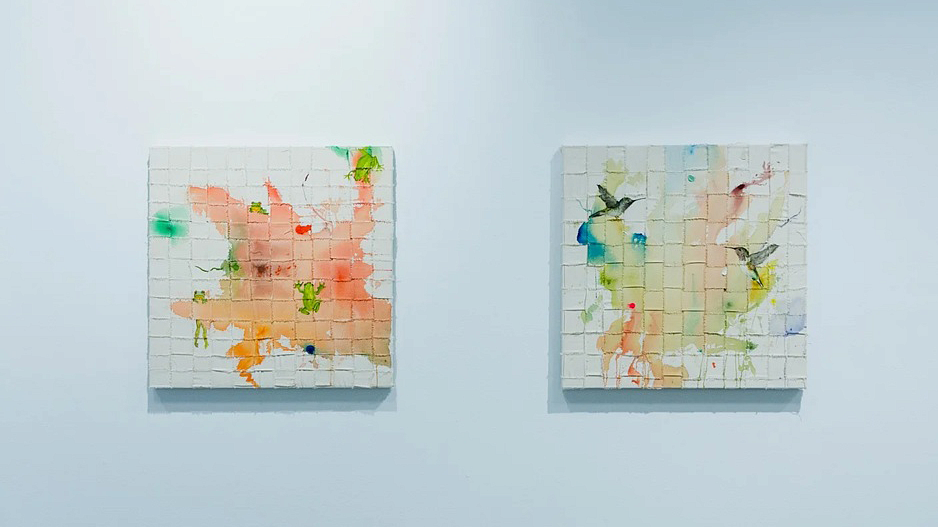
One of Prichard’s mentors, Professor Laura Vandenburgh, said students in the fine arts program must grapple with the preferences and sensibilities of a talented, opinionated art faculty so they can learn for themselves what kind of art they want to make.
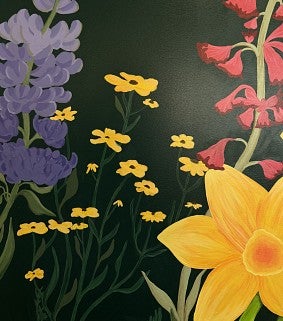
“Stella was learning to take risks and to trust her own instincts more,” Vandenburgh said. “It’s an important experience for them to figure out what they think. Not asking them to do what work I like, but ‘What do you believe?’ and even standing up for yourself. Figuring out how to develop and resolve that idea so that other people can appreciate its meaning. That has been the arc for Stella.”
Prichard brought these ideas to “Flora and Fauna,” as well. In the end, committing to what mattered to her most also made for a piece that speaks more clearly to the diverse audience of a public university.
“As an artist, a lot of the time you want to please the viewer — that drive is always going to be there,” Prichard said. “I went into this with the idea that it needs to be something that everyone is going to get, but there had to be a neutral ground. I wanted to do what I did, I just had to adjust to what was going to make sense for the entire audience. This was one of my best murals.”
Flourishing by Art student profiles
The Workplace e-newsletter — emailed Tuesdays to staff and faculty — is featuring the student artists of Flourishing by Art.
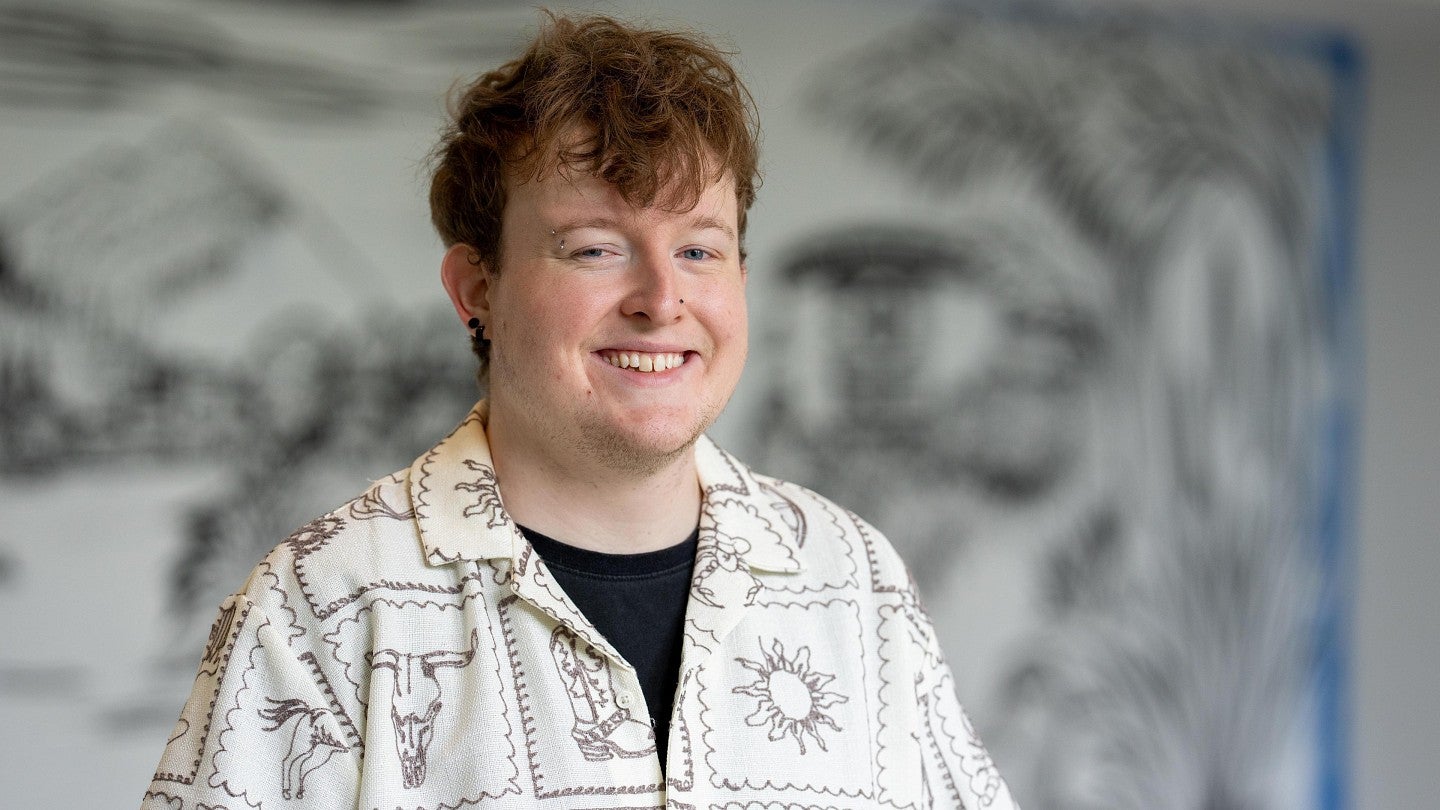
Oct. 7: Professional artist Anthony Michael Ryder is coping with the loss of his mother. The artistic process has given him catharsis and healing connections within the university community.
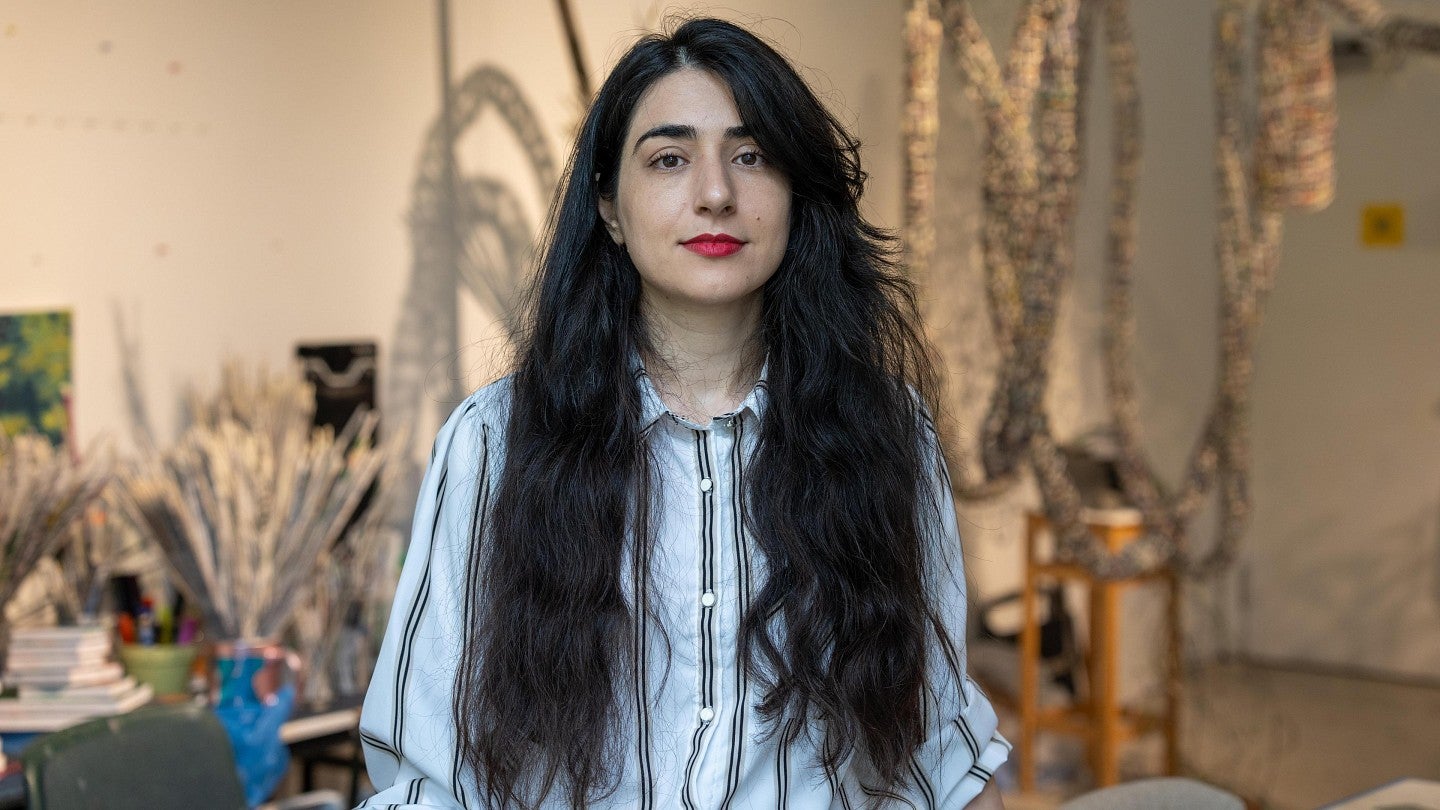
Oct. 14: Emerging artists need venues. Flourishing by Art provides one for Parisa Garazhian, an international student who combines Iranian mirror work and American quilt-making into a literal reflection on identity.
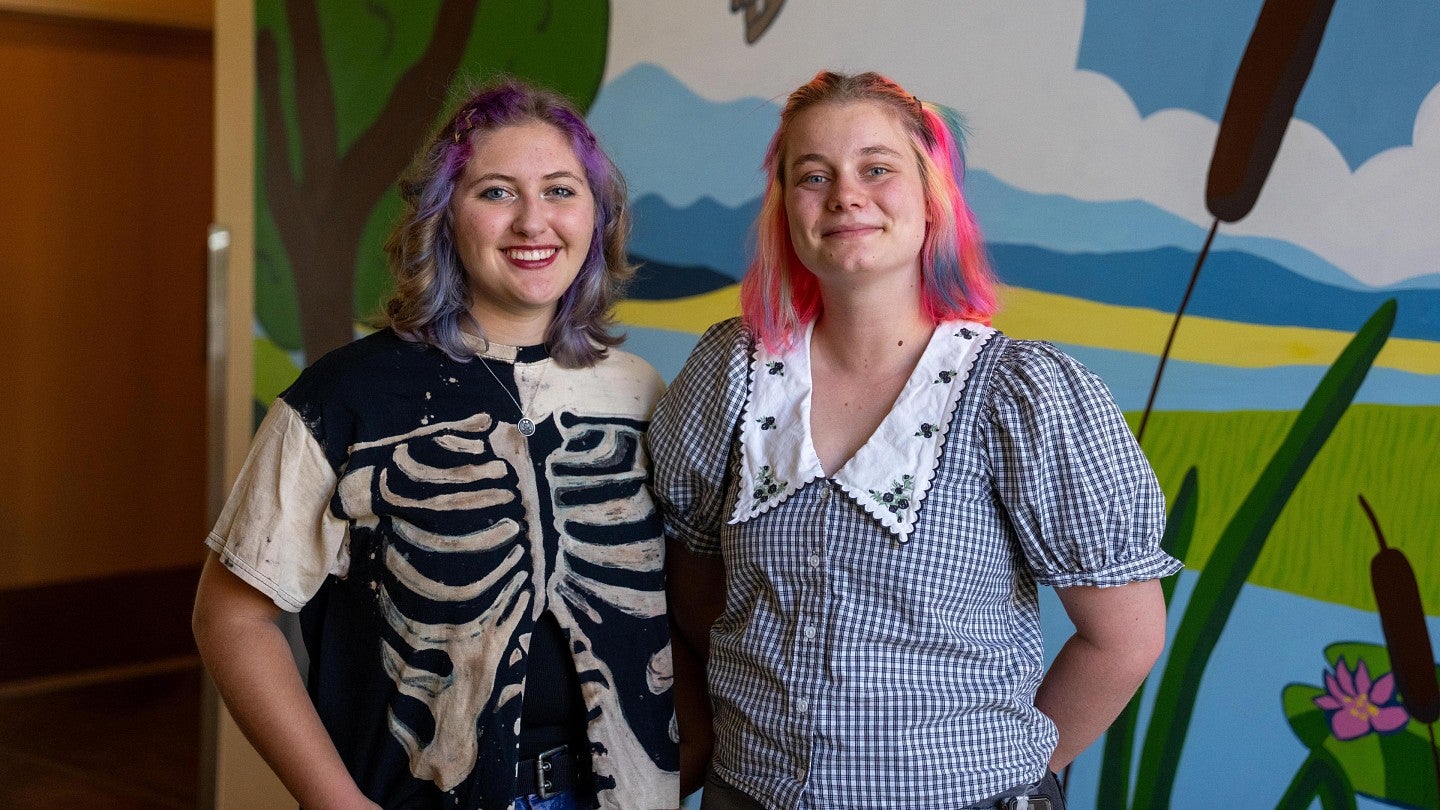
Oct. 21: Lucy Rutherford (black-and-white T-shirt) and Dani Jacobs have been friends and artists since middle school. They brought divergent artistic approaches to their first major collaboration.
See Flourishing by Art
Faculty, staff, students and the general public can view students’ works.

“Flora and Fauna”: Global Scholars Hall, mezzanine, 8 a.m. to 5 p.m., Monday through Friday during the academic year, excluding breaks.
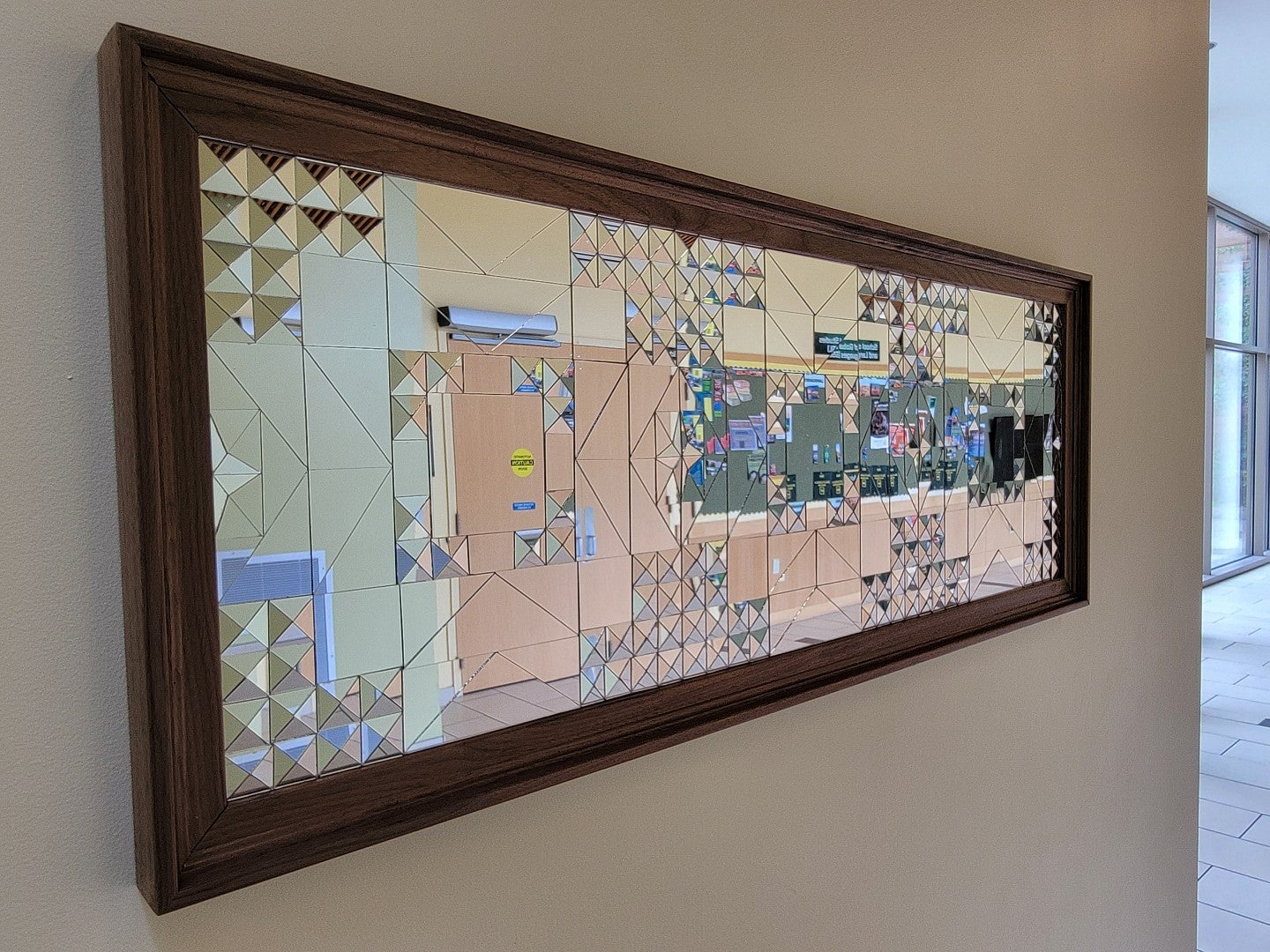
“Mirror Quilt”: Global Scholars Hall, first floor, 8 a.m. to 5 p.m., Monday through Friday during the academic year, excluding breaks.
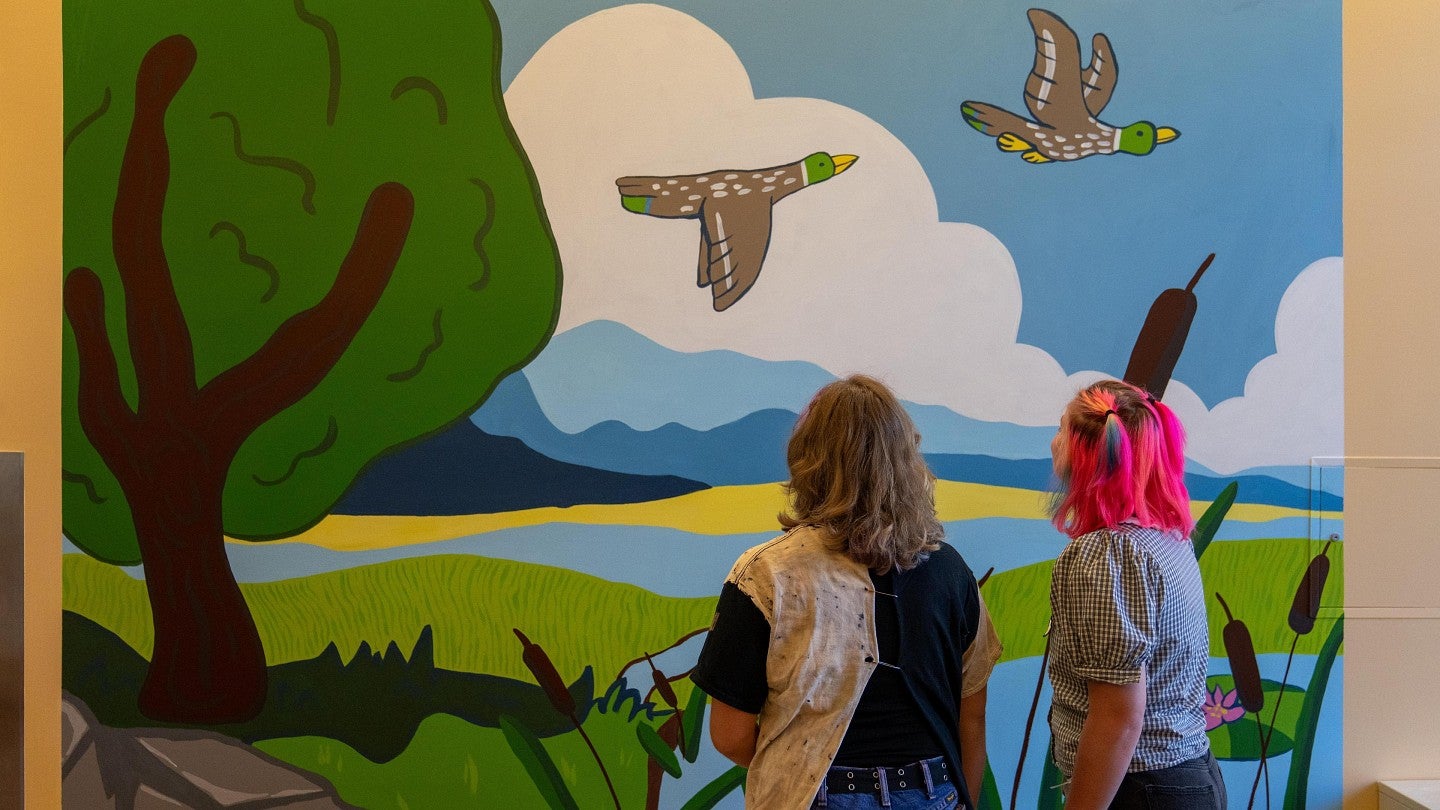
“Two Birds, One Stone”: Living Learning Center South, west hall, first floor, 10 a.m. to 9 p.m. weekdays and noon to 7 p.m. weekends during the academic year, excluding breaks.

